How to Use AI for Quality Inspection
In the manufacturing world, the quest for perfection never ends. As products become more complex and consumer expectations soar, the importance of quality inspection has reached unprecedented heights. Enter Artificial Intelligence (AI) – a game-changing technology that's revolutionizing the way we approach quality control. This article will guide you through the intricate world of AI-powered quality inspection, offering insights and strategies to help you stay ahead in the competitive manufacturing landscape.
Introduction
Brief history of quality inspection
Quality inspection has come a long way since its inception. In the early days of manufacturing, quality control relied heavily on human inspectors who manually examined products for defects. This labor-intensive process was time-consuming and prone to errors. As industries grew and production volumes increased, the need for more efficient inspection methods became apparent.
The 20th century saw significant advancements in quality control techniques. Walter A. Shewhart introduced statistical process control in the 1920s, which brought a more systematic approach to quality management. The post-World War II era witnessed the rise of Total Quality Management (TQM) principles, championed by experts like W. Edwards Deming and Joseph Juran. These methodologies laid the foundation for modern quality inspection practices.
Importance of quality control in manufacturing
Quality control is the backbone of successful manufacturing operations. It ensures that products meet specified standards, comply with regulations, and satisfy customer expectations. Effective quality control minimizes waste, reduces costs associated with defects and recalls, and enhances brand reputation. In today's globalized market, where competition is fierce and consumer loyalty is hard-earned, maintaining consistent product quality is not just an advantage – it's a necessity.
Moreover, quality control is crucial in ensuring product safety, particularly in automotive, aerospace, and healthcare industries. It helps prevent potentially dangerous defects from reaching end-users, protecting consumers and manufacturers from severe consequences. Quality control also drives continuous improvement in manufacturing processes, increasing efficiency and innovation.
Overview of AI's role in enhancing quality inspection
Artificial Intelligence has emerged as a powerful tool in the quality inspection arsenal. By leveraging machine learning algorithms and advanced computer vision technologies, AI can analyze vast amounts of data and detect defects quickly and accurately. This capability allows manufacturers to implement 100% real-time inspection, a feat previously impossible with traditional methods.
AI-powered quality inspection systems can identify subtle defects that might escape the human eye, ensuring product consistency. These systems can also adapt to new product variations and learn from experience, continuously improving their performance over time. By automating the inspection process, AI reduces the reliance on manual labor, minimizing human error and freeing workers to focus on more complex tasks.
Furthermore, AI enables predictive quality control by analyzing patterns and trends in production data. This proactive approach allows manufacturers to anticipate and prevent quality issues before they occur, leading to significant cost savings and improved overall product quality. As we delve deeper into the world of AI-driven quality inspection, you'll discover how this technology is transforming manufacturing processes and setting new standards for product excellence.
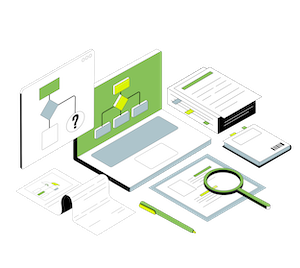
The Evolution and Impact of AI in Quality Control
From manual inspections to AI advancements
The journey from manual inspections to AI-powered quality control has been revolutionary. Traditional quality control methods relied heavily on human inspectors, who visually examined products for defects. While effective to a certain degree, this approach was time-consuming, prone to errors, and limited by human capabilities.
As manufacturing processes became more complex and production speeds increased, the limitations of manual inspections became increasingly apparent. This led to the development of automated inspection systems, which used sensors and basic image processing techniques to detect defects. However, these early automated systems were often inflexible and required extensive programming for each new product or defect type.
Artificial intelligence has ushered in a new era of quality control. AI quality control systems can now learn from examples, adapt to new situations, and make accurate decisions that surpass human capabilities. According to a recent study, 39% of manufacturers already use AI for quality inspection, while 35% use it for quality checks on the production line itself. This rapid adoption underscores the transformative impact of AI in the manufacturing sector.
Fundamental breakthroughs in machine vision and AI technologies
Several critical breakthroughs in machine vision and AI technologies have driven the evolution of AI in quality control. These advancements have significantly enhanced the capabilities of quality inspection systems, making them more accurate, versatile, and efficient.
Deep Learning Algorithms
Developing deep learning algorithms, particularly Convolutional Neural Networks (CNNs), has revolutionized image recognition capabilities. These algorithms can analyze complex visual patterns and detect subtle defects that traditional machine vision systems might miss.
Big Data Processing
Advancements in data processing capabilities have allowed AI systems to analyze vast production data in real time. This enables more comprehensive quality control and the ability to identify patterns that may indicate potential quality issues before they occur.
Edge Computing
The integration of edge computing in AI quality control systems has reduced latency and improved real-time decision-making capabilities. This is crucial in high-speed production environments where split-second decisions can significantly impact product quality.
Transfer Learning
This breakthrough allows AI models trained on one product or defect to be quickly adapted for use with new products or defects. This significantly reduces the time and data required to implement AI quality control for new production lines.
Sensor Fusion
Integrating data from multiple sensors (e.g., cameras, thermal imagers, and spectral sensors) has enhanced the depth and accuracy of quality inspections. AI systems can now simultaneously analyze products from multiple perspectives, providing a more comprehensive assessment of product quality.
These technological advancements have collectively transformed the landscape of quality control in manufacturing. AI-powered systems can now perform unprecedented and accurate inspections, adapting to new products and defects with minimal human intervention. As a result, manufacturers can achieve higher quality standards, reduce waste, and improve overall production efficiency.
The impact of AI in quality control extends beyond defect detection. Based on quality data analysis, these systems can now predict maintenance, process optimization, and even product design improvements. As AI technologies continue to evolve, we can expect even more innovative applications in the field of quality control, further revolutionizing manufacturing processes and product quality standards.
{{cta}}
How AI Transforms Quality Inspection Processes
Understanding Machine Vision and Its Capabilities
Machine vision, a key component of AI inspection systems, has revolutionized quality control processes. This technology enables computers to "see" and interpret visual information like the human eye and brain. However, when coupled with artificial intelligence inspection algorithms, machine vision can far surpass human capabilities in terms of speed, accuracy, and consistency.
AI visual inspection systems can analyze images and video streams in real time, detecting even the most minute defects that might escape the human eye. These systems can be trained to recognize various defects across various products and materials, making them incredibly versatile in manufacturing environments.
AI-based visual inspection can reduce the error rate to below one percent, compared to a 10% error rate for manual inspectors. This significant improvement in accuracy is due to the AI's ability to maintain consistent performance without fatigue or cognitive bias, which often affect human inspectors.
In-depth Analysis: AI-based Defect Detection Systems
AI-based defect detection systems represent a quantum leap in quality control technology. These systems leverage advanced algorithms and deep learning models to identify and classify defects with unprecedented accuracy and speed.
Automated Measurement and Inspection Techniques
Inspection AI has introduced a new level of automation to quality control processes. These systems can perform complex measurements and inspections without human intervention, ensuring consistent and objective results. AI systems do not suffer from fatigue, ensuring consistent and objective performance.
Moreover, AI inspectors can process and analyze images much faster than manual methods, significantly enhancing speed and efficiency in production lines. This capability allows for 100% inspection of products rather than the sampling methods often used in manual inspections.
Improving Accuracy with Deep Learning Models
Deep learning models have dramatically improved the accuracy of AI visual inspection systems. These models can be trained on vast datasets of defect images, allowing them to recognize and classify a wide range of defects with high precision.
AI quality inspection can detect even the smallest defects with high precision, surpassing human capabilities in many cases. This level of accuracy is particularly crucial in industries where even minor defects can have significant consequences, such as in electronics or automotive manufacturing.
Case Studies: Successful Implementations in Various Industries
The transformative power of AI in quality inspection is evident across various industries. Here are a few notable examples:
Automotive Industry
The use of AI in quality inspection can lead to a 30 percent reduction in defect rates, as seen in a car seat manufacturer. This significant improvement enhances product quality, reduces waste, and improves overall efficiency.
Line workers can ask a chatbot powered by AI questions about individual part requirements, which reduces downtime and the time supervisors spend reviewing common questions.
Electronics Manufacturing
AI visual inspection systems have been successfully implemented in electronics production lines to detect defects in circuit boards and other components. These systems can identify issues such as solder bridges, missing components, or misalignments that might be difficult for human inspectors to detect consistently.
Food and Beverage Industry
AI inspection systems detect contaminants, ensure proper packaging, and verify product quality in food production lines. These systems can operate at high speeds, allowing for 100% inspection of products without slowing down production.
Pharmaceutical Manufacturing
In the pharmaceutical industry, AI-powered inspection systems are crucial for ensuring the quality and safety of medications. These systems can detect defects in pills, verify proper labeling, and ensure packaging integrity.
With recent advances in AI, inspection systems can automatically store data generated about defects in a database, providing real-time alerts and detailed data on defect types and frequencies. This capability allows manufacturers to detect defects and analyze trends and patterns, enabling proactive quality improvement measures.
Implementing AI in quality inspection processes represents a paradigm shift in manufacturing. By combining the power of machine vision with advanced AI algorithms, these systems are setting new standards for accuracy, efficiency, and consistency in quality control. As AI technology evolves, we can expect even more innovative applications that will further transform quality inspection processes across industries.
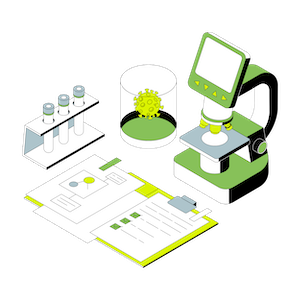
Step-by-Step Guide: Implementing AI for Quality Inspection
Implementing AI for quality inspection can significantly enhance your manufacturing processes. However, it requires careful planning and execution. This step-by-step guide will help you navigate the implementation process effectively.
Evaluating Your Needs and Setting Clear Objectives
The first step in implementing AI for quality inspection is thoroughly assessing your current quality control processes and identifying areas where AI can make the most impact. Here's how to approach this:
Analyze your current inspection processes:
- Identify bottlenecks and inefficiencies
- Determine error rates and types of defects commonly missed
- Assess the cost of quality issues and recalls
Define clear objectives:
- Set specific, measurable goals for improvement (e.g., reduce defect rate by 30%)
- Prioritize which products or production lines need AI implementation first
- Establish a timeline for implementation and expected ROI
Involve stakeholders:
- Engage quality control teams, production managers, and C-level executives
- Gather insights from front-line workers about current inspection challenges
- Address concerns and build buy-in across the organization
You'll create a solid foundation for your AI implementation project by thoroughly evaluating your needs and setting clear objectives.
Selecting the Right AI Tools and Technologies for Your Business
Choosing the appropriate AI tools and technologies is crucial for the success of your quality inspection system. Consider the following factors:
Type of defects:
- Determine if you need visual inspection, dimensional measurement, or both
- Assess the complexity of defects you need to detect
Production environment:
- Consider factors like lighting conditions, production speed, and product variability
- Evaluate whether you need real-time inspection or post-production analysis
Integration capabilities:
- Ensure the AI system can integrate with your existing manufacturing execution system (MES) and enterprise resource planning (ERP) software
- Check for compatibility with your current hardware and data infrastructure
Scalability and flexibility:
- Choose a system that can grow with your needs and adapt to new products or defect types
- Look for solutions that offer transfer learning capabilities to reduce setup time for new inspections
Vendor expertise and support:
- Evaluate the track record of potential AI vendors in your industry
- Assess the level of ongoing support and training they offer
You can select an AI system that best fits your specific quality inspection needs by carefully considering these factors.
Integrating AI Systems into Existing Manufacturing Processes
Once you've selected the right AI tools, the next step is to integrate them into your existing manufacturing processes. Here's a roadmap for successful integration:
Data preparation:
- Collect and organize historical quality data
- Prepare a dataset of defective and non-defective product images for AI training
System setup and configuration:
- Install necessary hardware (cameras, sensors, edge computing devices)
- Configure the AI software to align with your specific inspection requirements
Training and testing:
- Train the AI model using your prepared dataset
- Conduct thorough testing in a controlled environment before live implementation
Pilot implementation:
- Start with a small-scale pilot on a single production line
- Monitor performance closely and gather feedback from operators
Fine-tuning and optimization:
- Adjust the AI model based on initial results and feedback
- Optimize the system for speed and accuracy
Full-scale rollout:
- Gradually expand the AI system to other production lines
- Provide comprehensive training to all relevant staff
Continuous improvement:
- Regularly update the AI model with new data to improve its performance
- Stay informed about new AI technologies and upgrade your system as needed
Performance monitoring and reporting:
- Implement a system for tracking key performance indicators (KPIs)
- Set up automated reporting to keep stakeholders informed of the AI system's impact
Remember that implementation is an ongoing process, and continuous refinement will be necessary to maximize the benefits of your AI system.
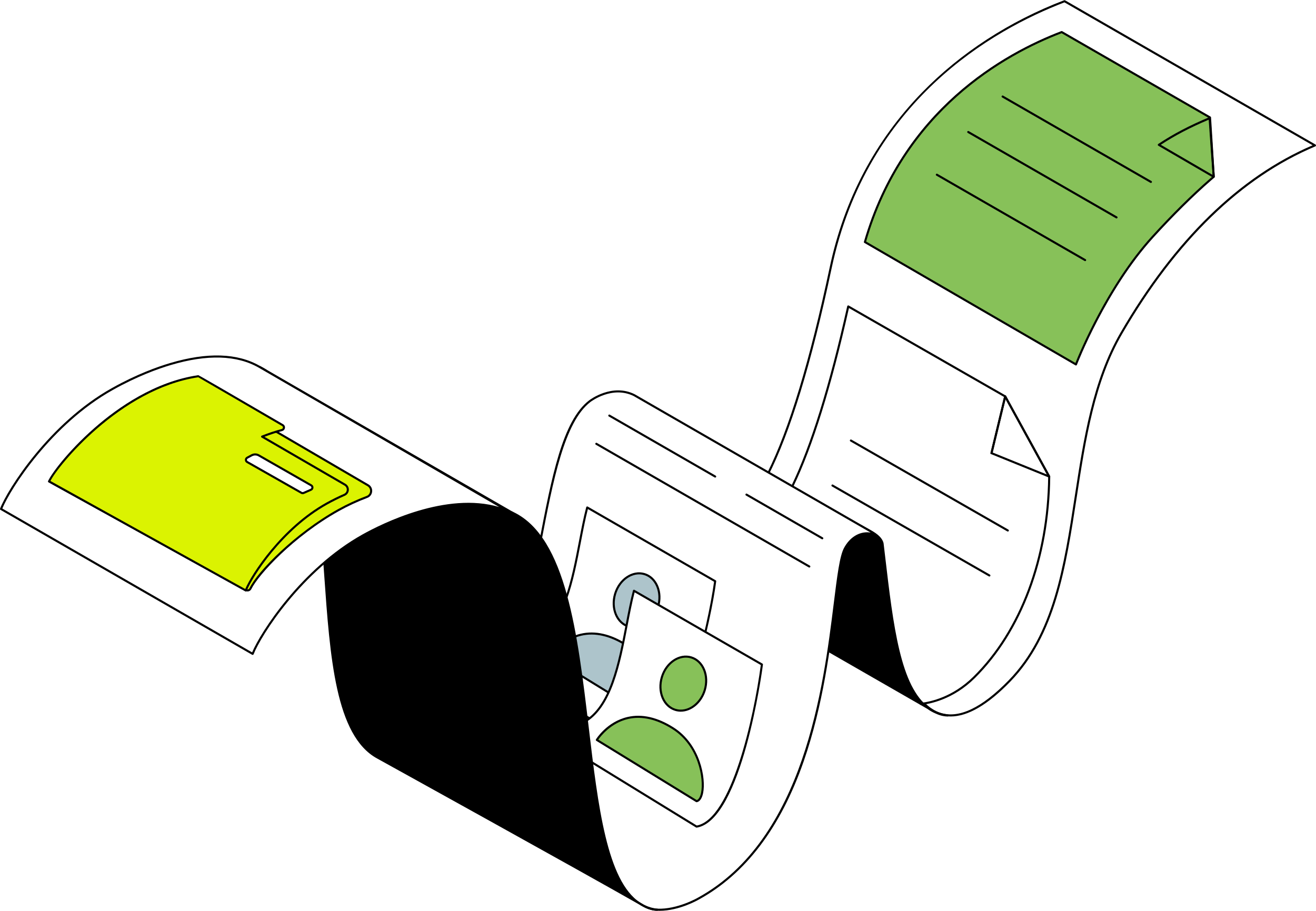
Benefits of Using AI for Quality Inspection
The integration of AI quality control in manufacturing processes has revolutionized the way companies approach quality inspection. This technology's benefits are far-reaching and transformative, impacting various aspects of production and customer satisfaction.
Enhancing Speed, Efficiency, and Productivity
AI-powered quality inspection systems significantly boost the speed and efficiency of production lines. Unlike human inspectors, who may slow down or fatigue over time, AI systems can operate continuously at high speeds without compromising accuracy. This capability allows for 100% inspection of products rather than relying on random sampling methods.
An AI-based inspection ensures consistent inspection performance, scalability, and data-driven decision-making, optimizing quality control across diverse product lines. This consistency is crucial for maintaining high productivity levels, especially in industries with complex products or high-volume production.
Moreover, AI quality control systems can process and analyze vast amounts of data in real time, providing immediate feedback to production teams. This rapid response enables quick adjustments to manufacturing processes, minimizing downtime and maximizing overall productivity.
Reducing Costs and Minimizing Human Error
One of AI's most significant benefits in quality inspection is its ability to reduce costs associated with defects and recalls. By detecting issues early in production, AI systems help prevent defective products from reaching customers, saving companies substantial amounts in potential recall and reputation damage costs.
AI quality control also minimizes human error, a common challenge in manual inspection processes. While human inspectors can be prone to fatigue, distractions, or inconsistencies in judgment, AI systems maintain a high level of accuracy regardless of the time of day or duration of operation. This consistency improves overall quality and reduces the need for rework and waste, further cutting production costs.
Additionally, by automating the inspection process, companies can reallocate human resources to more complex tasks that require creativity and problem-solving skills, optimizing their workforce and potentially reducing labor costs.
Strengthening Quality Compliance and Customer Satisfaction
AI-powered quality inspection systems ensure compliance with industry standards and regulations. These systems can be programmed to adhere to specific quality criteria, ensuring that every product meets the required standards before leaving the production line. This level of consistency is precious in industries with strict regulatory requirements, such as pharmaceuticals or aerospace.
Furthermore, the improved accuracy and reliability of AI-based inspections lead to higher overall product quality, directly translating to increased customer satisfaction. Customers receive products with fewer defects, enhancing their experience and loyalty to the brand.
Integrating AI with augmented reality (AR) technologies extends inspection capabilities beyond defect detection, enhancing decision-making and workplace safety. This combination of technologies improves the quality inspection process and provides valuable data for continuous improvement initiatives. By analyzing patterns and trends in defect data, manufacturers can identify root causes of quality issues and implement preventive measures, further enhancing product quality and customer satisfaction.
In conclusion, the benefits of using AI for quality inspection are multifaceted and impactful. From enhancing speed and efficiency to reducing costs and strengthening compliance, AI quality control systems are transforming manufacturing processes and setting new standards for product quality. As these technologies continue to evolve, we can expect even more significant advancements in quality inspection, further solidifying AI's role as an indispensable tool in modern manufacturing.
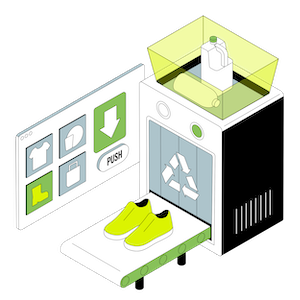
Navigating the Challenges of AI Implementation in Quality Control
While the benefits of AI quality control are substantial, implementing these systems comes with its own challenges. Understanding and addressing these hurdles is crucial for the successful integration and optimal performance of AI-powered quality inspection systems.
Tackling Technical Challenges: Data, Integration, and Scalability Issues
Data management is one of the primary technical challenges in implementing AI for quality control. AI systems require large amounts of high-quality, labeled data to train accurate models. However, AI visual inspection systems can be trained with as few as 10 to 20 defective images to create highly accurate models. This is particularly beneficial for manufacturers dealing with rare defects or new product lines where extensive defect data may not be available.
Despite this advantage, companies still face challenges in:
- Data Collection: Gathering diverse and representative data that covers all possible defect types and variations.
- Data Labeling: Accurately labeling defects in training data can be time-consuming and require expert knowledge.
- Data Quality: Ensuring the data is clean, consistent, and free from biases that could affect the AI model's performance.
Integration with existing systems poses another significant challenge. AI quality control systems need to seamlessly interact with current manufacturing execution systems (MES), enterprise resource planning (ERP) software, and other production line equipment. This integration often requires careful planning and may necessitate updates to existing infrastructure.
Scalability is also a crucial consideration. As production needs to grow or diversify, the AI system must be able to adapt and scale accordingly. This might involve:
- Expanding the system to cover new product lines or defect types
- Increasing processing power to handle higher production volumes
- Ensuring the AI model can transfer learning from one product to another efficiently
Managing Organizational Change and Employee Training
Implementing AI quality control systems often requires significant organizational changes. Resistance to these changes can be a major hurdle. To overcome this:
- Communicate the benefits: Explain how AI will improve processes and job quality, not replace human workers.
- Involve employees early: Engage staff in the implementation process to build buy-in and gather valuable insights.
- Provide comprehensive training: Ensure all relevant employees understand how to work with and interpret the AI system's outputs.
Training is particularly crucial. Employees need to understand not just how to operate the AI system but also how to interpret its results and make data-driven decisions. This may require developing new skill sets within the organization or hiring specialists with AI expertise.
Maintaining Privacy, Security, and Ethical Standards
As AI quality control systems handle sensitive production data, maintaining privacy and security is paramount. Challenges in this area include:
- Data Protection: Implementing robust cybersecurity measures to protect proprietary manufacturing data and AI models.
- Compliance: Ensuring the AI system adheres to industry-specific regulations and data protection laws.
- Ethical Considerations: Addressing potential biases in AI models and ensuring fair and transparent decision-making processes.
To tackle these challenges:
- Develop transparent data governance policies that outline how data is collected, used, and protected.
- Regularly audit AI systems for potential biases or ethical issues.
- Stay informed about evolving regulations and standards related to AI in manufacturing.
In conclusion, while implementing AI quality control systems presents several challenges, they are not insurmountable. Manufacturers can successfully navigate the implementation process by anticipating these hurdles and developing strategies to address them. The key lies in careful planning, ongoing employee engagement and training, and maintaining high data management standardsevolves and ethical practices. As AI technology continues to evolve, staying adaptable and open to continuous learning will be crucial for long-term success in AI-powered quality control.
Lessons Learned from Early Adopters
Start Small, Scale Fast
Many successful implementations began with pilot projects focused on specific production lines or defect types. This approach allowed companies to demonstrate ROI quickly and gain organizational buy-in before scaling up.
Data Quality is Crucial
Companies that invested time in creating high-quality, diverse datasets for training their AI models saw better results. One electronics manufacturer found that including a wide range of lighting conditions in their training data improved the accuracy of their AI visual inspection system by 15%.
Continuous Learning is Key
Firms implementing systems capable of continuous learning and adaptation saw sustained improvements. An automotive parts supplier reported that their AI inspection system's accuracy improved by 5% every quarter due to ongoing learning from new data.
Human-AI Collaboration
The most successful implementations didn't aim to replace human inspectors entirely but to augment their capabilities.
Integration with Existing Systems
Companies that seamlessly integrated AI inspection with their existing manufacturing execution systems (MES) and enterprise resource planning (ERP) software saw more significant overall efficiency gains. One consumer electronics company reported a 25% improvement in overall production efficiency after full integration.
Employee Training and Engagement
Firms that invested in comprehensive training programs and actively involved employees in the implementation process saw faster adoption and better results. A medical device manufacturer reported involving quality control staff in the development of the AI system led to a 30% faster implementation time.
Flexibility and Adaptability
Companies that chose flexible AI inspection systems capable of adapting to new products or defect types saw better long-term value. A contract manufacturer reported that their adaptable AI system reduced setup time for new product inspections by 70%.
These lessons learned demonstrate the significant potential of AI inspection across various industries. While the specific improvements vary by sector, the overall trend shows enhanced accuracy, increased efficiency, and reduced costs. As AI technologies continue to evolve, we can expect even more impressive results in the future.
By learning from these early adopters, companies can better prepare for their own AI inspection implementations, avoid common pitfalls, and maximize the benefits of this transformative technology.
Key Takeaways on Using AI for Quality Inspection
- Enhanced Accuracy and Consistency: AI-powered inspection systems have demonstrated superior accuracy to traditional methods, detecting even minute defects with remarkable consistency.
- Increased Efficiency and Productivity: AI automates the inspection process, enabling 100% inspection at high speeds, significantly boosting production efficiency.
- Cost Reduction: AI quality inspection systems help reduce costs associated with defects, recalls, and manual labor, leading to substantial long-term savings.
- Data-Driven Insights: These systems provide valuable data for continuous improvement, enabling manufacturers to identify and address the root causes of quality issues.
- Scalability and Flexibility: AI inspection systems can be scaled to handle increased production volumes and adapted to inspect new product lines with minimal downtime.
- Improved Compliance: AI helps ensure consistent adherence to quality standards and regulatory requirements, crucial in highly regulated industries.
- Human-AI Collaboration: Rather than replacing human workers, AI augments their capabilities, allowing them to focus on more complex tasks and decision-making.
- Challenges and Considerations: Successful implementation requires addressing challenges such as data management, integration with existing systems, and employee training.
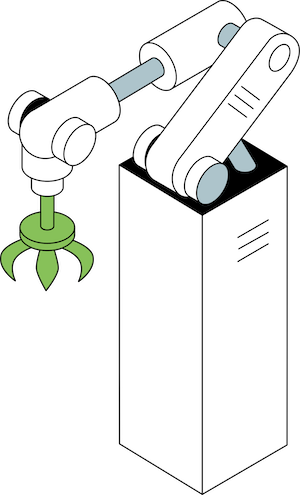
The Strategic Importance of Continuous Innovation in Quality Control
The manufacturing landscape is evolving rapidly, and quality control must keep pace. Continuous innovation in AI-powered quality inspection is not just beneficial—it's strategically crucial for several reasons:
- Competitive Advantage: Companies that leverage cutting-edge AI technologies for quality control can produce higher-quality products more efficiently, giving them a significant edge in the market.
- Adaptability to Market Changes: As consumer demands and product complexities increase, AI systems that can quickly adapt to new inspection criteria will be essential for maintaining quality standards.
- Proactive Quality Management: The future of quality control lies in prediction and prevention. Continuous innovation in AI and machine learning will enable more sophisticated predictive models, allowing manufacturers to address potential quality issues before they occur.
- Sustainability: By reducing waste and improving resource efficiency, advanced AI inspection systems contribute to more sustainable manufacturing practices, which are becoming increasingly important for businesses and consumers.
- Regulatory Compliance: As regulations become more stringent, AI systems that can adapt to new compliance requirements will be invaluable in maintaining regulatory adherence without sacrificing productivity.
- Workforce Development: Ongoing innovation in AI quality control systems will drive the need for new skills and roles in manufacturing, fostering a more technologically adept workforce.
- Data-Driven Decision-Making: Continuous improvements in AI and data analytics will provide increasingly valuable insights, enabling more informed strategic decisions at all levels of manufacturing operations.
In conclusion, integrating AI in quality inspection represents a paradigm shift in manufacturing. It offers unprecedented opportunities for improving product quality, operational efficiency, and competitive positioning. However, the true power of AI in quality control lies not just in its current capabilities but in its potential for continuous evolution and improvement.
As we look to the future, it's clear that those who embrace and drive innovation in AI-powered quality inspection will be best positioned to thrive in an increasingly competitive and complex manufacturing landscape. The journey of AI in quality control is just beginning, and the possibilities are boundless for those ready to lead the charge in this exciting field.
Answers your employees need, right when they need them
Meet Botable — the AI chatbot that handles everything from simple FAQs to complex, multi-step questions, so your team can focus on what matters. Built for HR, QA, and beyond.
Continue reading
Ready to see what Botable can do for you?
Book your demo now to see how Botable can transform your workplace.
Identify your unique challenges
Flexible pricing options
Easy integrations
Step-by-step implementation plan
Customize Botable for your workflow
Book a demo
.webp)





